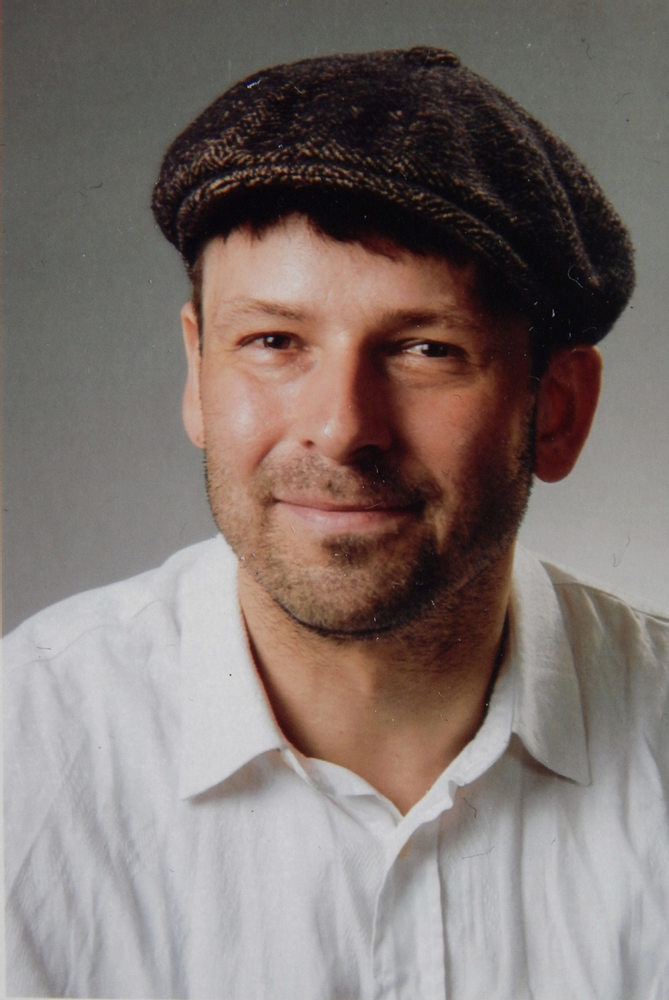
Michael Kaphengst
L’artista tedesco Michael Kaphengst è un eclettico pensatore e un profondo osservatore delle attitudini e abitudini del vivere contemporaneo, quei meccanismi automatici che in qualche modo uniformano e generalizzano emozioni, sensazioni, desideri attuali che le persone individuano come essenziali mentre in realtà sono solo figlie di un condizionamento dentro cui non si rendono conto di essere. La necessità di suddividere l’immagine in linee, in alcuni casi rette, in altri più curve e in altri ancora solo accennate e utilizzate per evidenziare il punto focale dell’opera, diventa funzionale per esprimere il pensiero di Kaphengst secondo cui il destino, il percorso di ciascuno sembra essere già segnato, prestabilito, dunque malgrado le direzioni differenti che si possono intraprendere, costituite da quelle linee apparentemente divergenti ma fondamentalmente unidirezionali, il punto d’arrivo sarà sempre il medesimo. Nell’essere umano esiste sempre l’illusione della facoltà di rompere quegli schemi apparentemente predefiniti, quei binari di un determinismo che sembra lasciare una possibilità di scelta, l’opzione di spezzare una catena e liberarsi da tutto ciò che apparentemente imprigiona e ingabbia, eppure in realtà qualunque sia la linea su cui l’individuo si muove andrà sempre verso la medesima direzione. L’artista è molto abile a inserire un possibilismo utopico, a volte rappresentato dalla vivacità di colori e tonalità, altre da un elemento di rottura, e in alcuni casi mettendo in evidenza i simboli della società contemporanea proprio per dare l’opportunità all’osservatore di notarli e riflettere su di essi, su ciò che rappresentano e sulla loro reale utilità nella quotidianità, pur senza fornirgli la chiave per districarsi da una rete che appartiene inevitabilmente all’esistenza. Tutto ciò che è potrebbe anche non essere se si osserva il rovescio della linea, se si decide di andare oltre l’apparenza spesso percepita come un dato di fatto, qualcosa di imprescindibile o irrinunciabile che invece costituisce solo un’abitudine, parte di un sistema che nella maggior parte dei casi viene indotta dal modo di vivere generalizzato, dai mass media, dal consumismo e l’arrivismo del vivere attuale. Malgrado la consapevolezza tuttavia non è possibile liberarsi da quelle gabbie, si tende a restare impelagati perché in fondo l’uomo non riesce a contrastare i solchi tracciati dalla società e dal suo stesso destino. Dal punto di vista stilistico il Linearismo si muove su quattro differenti manifestazioni espressive, discostanti ma convergenti: la prima contraddistinta da linee nette e immagini bidimensionali, semplificate e funzionali a indicare il concetto profondo dell’immobilità del fato che avvolge l’uomo;

Alone
la seconda invece presenta linee più sottili e curve, come se fossero ombre sulla rappresentazione più definita, metafisica e orientata a raccontare allegorie e metafore, in cui il disegno è meno semplificato, più tendente al reale ma fortemente simbolico e intriso di concetti; la terza annulla l’immagine e si sposta su un astratto attraverso cui affiora solo e unicamente il pensiero, la sostanza del significato, e le linee leggermente curve si ispessiscono, dominano la tela e la attraversano come d’altronde l’essere umano attraversa la vita;
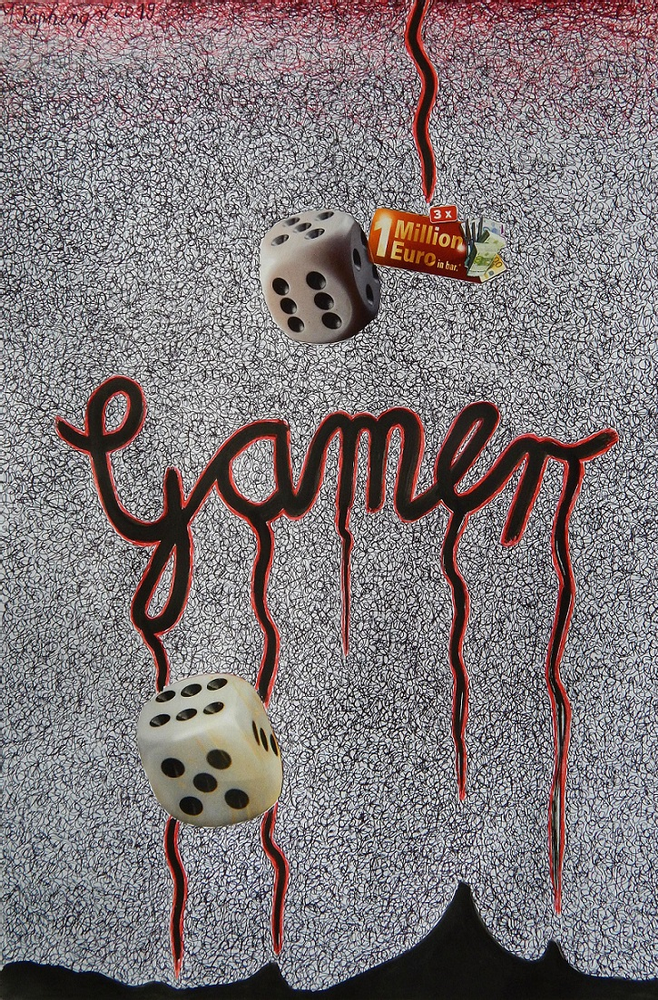
Garner
e infine la quarta più Pop, e perciò fortemente figurativa, in cui le curve appena accennate pongono in evidenza la tendenza, che poi diviene quasi necessità, consumistica in cui l’uomo contemporaneo si trova a vivere. Ora però sentiamo dalla voce di Michael Kaphengst i significati e le motivazioni che lo hanno indotto a sviluppare tale poetica filosofico-pittorica.
Qual è stato il momento in cui ha sentito l’impulso di creare un nuovo stile pittorico?
Ci tengo a precisare che non sono un filosofo anche se la mia arte o le mie teorie sembrano filosofiche, cosa che peraltro mi fa enormemente piacere, tuttavia in realtà ciò che faccio è cercare solo risposte artistiche. Quando ho iniziato alla fine degli anni Ottanta a occuparmi di arte, non ho avuto subito l’idea di creare qualcosa di nuovo, tutto quello che è successo fino ad oggi è stato la conseguenza di uno sviluppo piuttosto naturale. Ho sperimentato molto e letto tanto sugli artisti del passato, ho approfondito la storia dell’arte, in tal modo ho notato che il dedicarsi completamente all’arte è un processo lineare tuttavia non mi è subito venuto in mente di chiamare Linearismo questo concetto che avevo evidenziato nei miei studi e nel mio percorso artistico iniziale. Quei pensieri si sono sviluppati più tardi.
A quali delle correnti del Novecento, periodo in cui i movimenti erano alla base delle evoluzioni e rivoluzioni stilistiche, si è ispirato per elaborare il suo Linearismo?
Quando Salvador Dalì morì nel 1989, vidi un documentario televisivo su di lui che ha suscitato la mia curiosità così ho raccolto e studiato libri e testi biografici su Dalì e sul Surrealismo. Nel corso del tempo, mi sono anche imbattuto nella Pop Art che mi ha ispirato a sperimentare l’uso di oggetti di consumo in scene surreali e questa parte della mia produzione l’ho chiamata in seguito Surrealismo Consumistico. In quel caso mi sono reso conto con il tempo che il mondo del consumo, l’acquisto di beni in realtà superflui così come il consumismo stesso, è un processo lineare e non solo POP, inteso cioè come popolare. Gli artisti Pop Art non hanno interpretato il mondo dell’acquisto compulsivo come un processo lineare, hanno semplicemente trasformato i beni di consumo in arte. Ogni persona deve comprare per tutto il corso della sua esistenza per poter sopravvivere o per plasmare la propria vita e questo processo non si ferma e questa è una forza dominante nelle nostre vite è qualcosa di cui parliamo raramente. È il consumismo, di fatto il silenziamento della nostra immaginazione morale ma, distratti dalla corsa all’acquisto, difficilmente pensiamo a cosa ci sia dietro l’oggetto in sé.
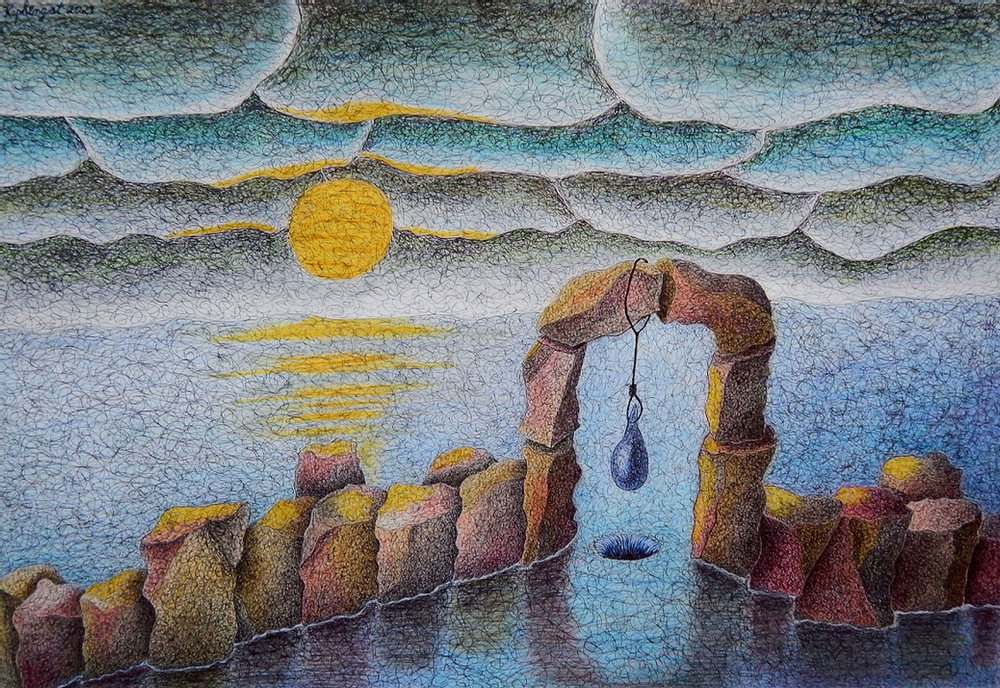
The beginning
Ci racconta nel dettaglio quali sono le linee espressive su cui si muove e cosa rappresenta ciascuna di esse?
Ho iniziato a sperimentare la linea quando ho iniziato a riflettere sul fatto che possiamo rientrare tutti in questo processo lineare. Stavo pensando a come creare il mio Linearismo che mi identifica e descrive il mio stile così ho iniziato a dipingere riga per riga a colori, per creare un mio personale linguaggio visivo.
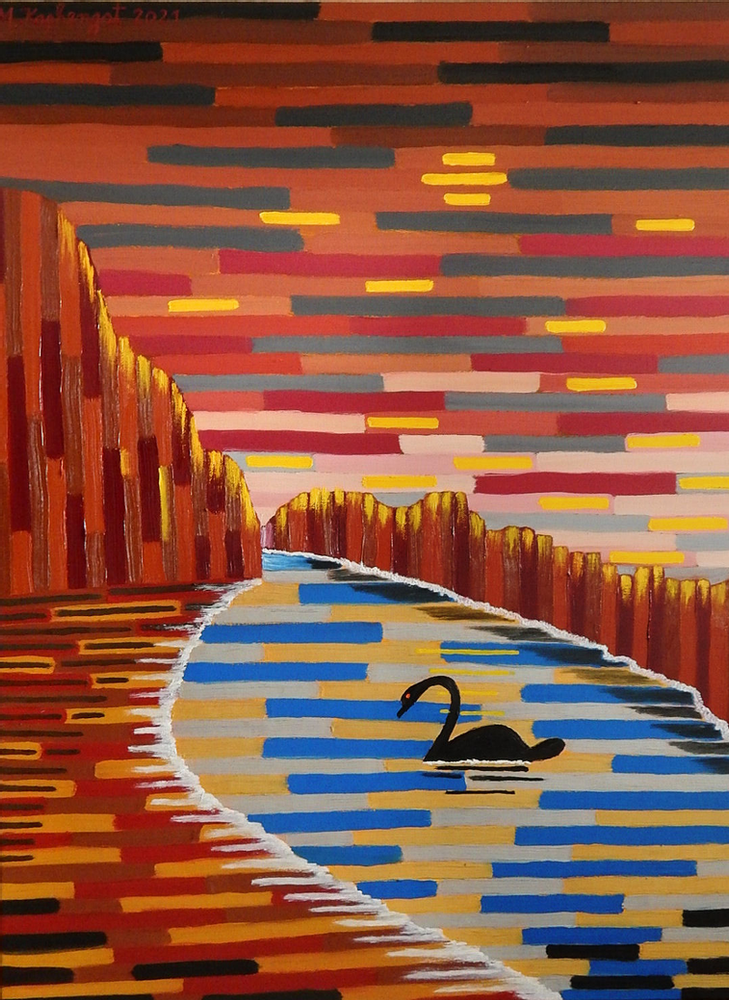
Blackswan
Sono stato anche affascinato dal lavoro di Niki De Saint Phalle, che è diventata famosa in tutto il mondo per le sue opere dipinte sparando; l’uso di una pistola o di una carabina come strumento per creare arte mi ha incuriosito. Ho trovato ispirazione nel suo approccio e ho iniziato a riflettere su come potevo usare un’arma nel mio Linearismo così mi è venuta l’idea di attaccare un pennello alla sommità di uno stocco per disegnare delle linee sulla tela. Questa produzione la chiamo quadri di scherma da cui deriva il Linearismo Assoluto perché le linee sono tracciate liberamente e radicalmente sulla tela, anche se qui non sono ancora estremamente disposte perciò ho pensato di andare ancora oltre e dissolvere il motivo in linee ancora più sottili. Se uso la matita da disegno solo appoggiandola, dopo due o tre ore di lavoro alla fine ottengo ancora una linea continua mentre l’estremo si manifesta quando utilizzo la matita in modo incontrollato con movimenti circolari sul foglio da disegno, in questo modo il motivo emerge e ottiene una dinamica in movimento che chiamo Linearismo estremo.
Lei è un acuto osservatore della società contemporanea e dell’immobilità dell’uomo moderno che tende ad adeguarsi passivamente allo stato delle cose. Crede davvero che non vi sia alcuna possibilità di sfuggire a un destino che sembra predeterminato? Perché gli individui continuano a lasciarsi intrappolare e fagocitare senza comprendere l’importanza del prendere in mano la propria vita?
Sono cresciuto in un orfanotrofio e non ho mai incontrato mio padre, mia madre era una maniaco-depressiva e ha sofferto di questa malattia mentale per tutta la vita. Ha avuto episodi schizofrenici regolari e ha dovuto essere ricoverata in ospedale per mesi. Io e le mie due sorelle abbiamo sofferto tutte molto per questo. Non posso mettere da parte questo destino, mi accompagnerà sempre e ovviamente mi ha influenzato. Da bambino a volte ero disperato e la mia salvezza è stata l’arte, nell’arte posso far fluire i miei pensieri ed esprimermi. Credo che non sia possibile sfuggire al proprio destino, ma posso influenzarlo seguendo la mia strada nella vita. Quando percorro una nuova strada, seguo una linea e faccio di tutto per andare verso quella strada e se non voglio incontrare gli ostacoli che inevitabilmente a essa sono associati non posso proseguire, quindi non è possibile sfuggire a un processo lineare. L’alternativa è solo la morte. Questo concetto l’’ho chiamato la dittatura della linea poiché siamo soggettati alla nostra naturale costrizione. Abbiamo bisogno di cibo, bevande, sonno, sessualità, e abbiamo desideri o compulsioni auto-scelti come amicizia, collaborazione, carriera così mettiamo in campo tutte le nostre forze per raggiungere questi obiettivi.
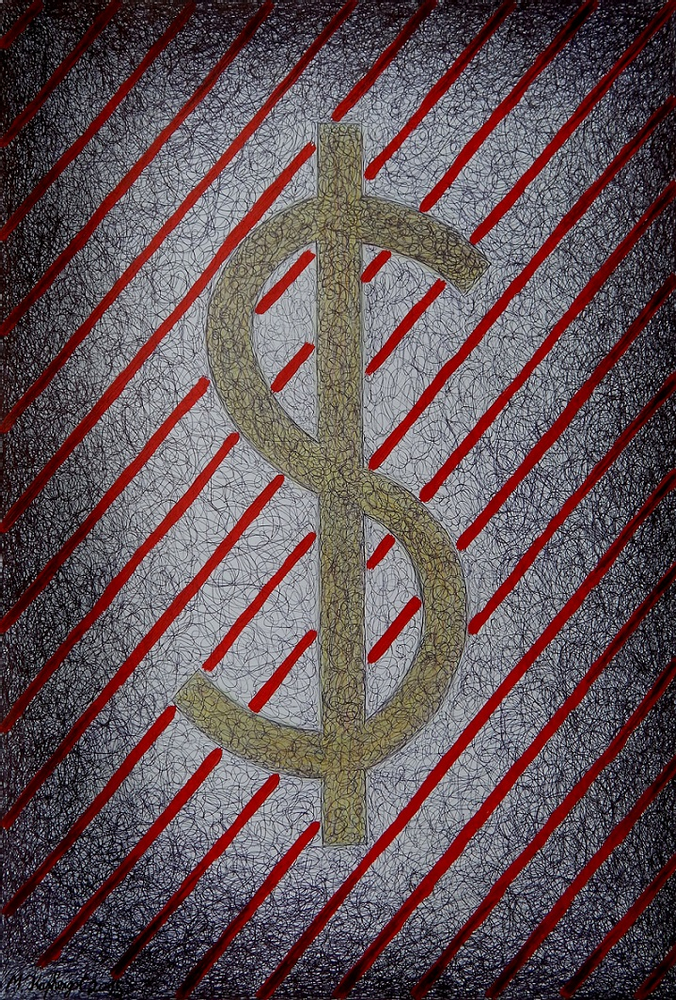
Core
Devo aggiungere una cosa interessante: quando mia madre mi ha portato fuori dalla casa dei bambini, penso di avere dieci o undici anni, ci siamo trasferiti in un altro villaggio chiamato Berumbur, lì vivevamo in una strada chiamata Linienweg, che tradotto risulta tipo via della Linea. Credo che questa non sia stata una coincidenza.
Recentemente ha vinto molti premi e riconoscimenti, qual è stata la più grande soddisfazione? Quali sono i prossimi progetti?
Sono stato incredibilmente felice del Premio Internazionale Leonardo da Vinci, ero presente personalmente a Firenze e ho potuto ricevere il premio e devo dire che è stata una grande emozione quando il mio nome è stato chiamato alla cerimonia a Palazzo Borghese a Firenze. Era appena prima che iniziasse la pandemia; poi tutti gli altri eventi sono stati cancellati perché non è più stato permesso viaggiare. Mi sarebbe piaciuto viaggiare e incontrare altri artisti da tutto il mondo ma le cerimonie sono state tutte annullate e i premi spediti per posta, e sebbene sia stato meraviglioso riceverli non è stata la stessa esperienza. Penso che quest’anno sarà difficile esporre. Spero davvero di avere l’opportunità di partecipare a una presentazione a New York e a dicembre a Barcellona.
MICHAEL KAPHENGST-CONTATTI
Email: michaelkaphengst@msn.com
Sito web: https://michaelkaphengst5.wixsite.com/linearismus
Facebook: https://www.facebook.com/michael.kaphengst
https://www.facebook.com/der.linearist/
Instagram: https://www.instagram.com/michaelkaphengst/
Marta Lock’s interviews:
Michael Kaphengst, Linearism to tell the story of modern man
The German artist Michael Kaphengst is an eclectic thinker and a profound observer of the
attitudes and habits of contemporary life, those automatic mechanisms that in some way
standardise and generalise emotions, sensations and current desires that people identify as
essential while in reality they are only the daughters of a conditioning within which they do
not realise they are. The need to share image into lines, in some cases straight, in others more
curved and in others only hinted at and used to highlight the focal point of the work, becomes
functional to express Kaphengst’s thought that the destiny, the path of each one seems to be
already marked, predetermined, so despite the different directions that can be taken,
consisting of those lines apparently divergent but fundamentally unidirectional, the point of
arrival will always be the same. In the human being there is always the illusion of the faculty
of breaking those apparently predefined schemes, those tracks of a determinism that seems to
leave a possibility of choice, the option of breaking a chain and freeing oneself from all that
apparently imprisons and cages, yet whatever the line on which the individual moves it will
always go towards the same direction. The artist is very skilful at inserting a utopian
possibilism, sometimes represented by the liveliness of colours and shades, sometimes by an
element of rupture, and in some cases by highlighting the symbols of contemporary society
precisely in order to give the observer the opportunity to notice and reflect on them, on what
they represent and on their real usefulness in everyday life, without giving him the key to
untangle himself from a grid that inevitably belongs to existence. Everything that is may well
not be if one looks at the other side of the line, if one decides to go beyond the appearance
that is often perceived as a fact, something indispensable or undeniable, but which instead
constitutes only a habit, part of a system that in most cases is induced by the generalised way
of life, by the mass media, by consumerism and the careerism of current living. Despite
awareness, however, it is not possible to free oneself from these cages; one tends to get
caught up in them because, deep down, man is unable to counteract the furrows traced by
society and his own destiny. From a stylistic point of view, Linearism is based on four
different expressive manifestations, which differ but converge: the first marked by sharp lines
and two-dimensional images, simplified and functional to indicate the profound concept of
the immobility of fate that envelops man; the second instead presents thinner and curved
lines, as if they were shadows on the representation more defined, metaphysical and oriented
to tell allegories and metaphors, in which the drawing is less simplified, more tending to the
real but strongly symbolic and imbued with concepts; the third cancels the image and shifts to
an abstract through which only the thought emerges, the substance of the meaning, and the
slightly curved lines thicken, dominating the canvas and crossing it as the human being
crosses life; and finally the fourth, more Pop, and therefore strongly figurative, in which the
curves just mentioned highlight the trend, which then becomes almost a necessity,
consumerism in which contemporary man finds himself living. Now, however, let us hear
from Michael Kaphengst about the meanings and motivations that led him to develop such
philosophical-pictorial poetics.
What was the moment when you felt the urge to create a new style of painting?
- I would like to clarify that I am not a philosopher even if my art or my theories seem
philosophical, which also gives me enormous pleasure, however in reality what I do is seek
only artistic answers. When I started dealing with art at the end of the eighties, I didn’t
immediately have the idea of creating something new, everything that has happened to date
has been the consequence of a rather natural development. I have experimented a lot and read
a lot about the artists of the past, I deepened the history of art, in this way I noticed that
dedicating oneself completely to art is a linear process, however it did not immediately occur
to me to call Linearism this concept highlighted in my studies and in my initial artistic path.
Those thoughts developed later.
Which of the currents of the 20th century, a period in which movements were at the
basis of stylistic evolutions and revolutions, inspired you to develop your Linearism?
When Salvador Dali died in 1989, I saw a television documentary about him that piqued my
curiosity so I collected and studied biographical books and texts on Dali and Surrealism.
Over time, I also came across Pop Art which inspired me to experiment with the use of
consumer objects in surreal scenes and this part of my production I later called Consumptive
Surrealism. In that case, I realized over time that the world of consumption, the purchase of
goods that are actually superfluous as well as consumerism itself, is a linear process and not
just POP, understood as popular. Pop Art artists have not interpreted the world of compulsive
buying as a linear process, they have simply transformed consumer goods into art. Every
person has to buy for the entire course of their existence in order to survive or to shape their
life and this process does not stop and this is a dominant force in our lives, is something we
rarely talk about. Consumerism is in fact the silencing of our moral imagination but,
distracted by the rush to buy, we hardly think about what lies behind the object itself.
Can you tell us in detail which expressive lines you follow and what each of them
represents?
I started experimenting with the line when I started considering that we can all fit into this
linear process. I was thinking about how to create my own Linearism that identifies me and
describes my style so I started painting line by line in color, to create my own visual
language. I was also fascinated by the work of Niki De Saint Phalle, who became famous all
over the world for her works painted by shooting; the use of a gun or a carbine as a tool to
create art intrigued me. I found inspiration in her approach and started thinking about how I
could use a weapon in my Linearism so I came up with the idea of attaching a brush to the
top of a rapier to draw lines on the canvas. This production I call fencing paintings from
which Absolute Linearism derives because the lines are drawn freely and radically on the
canvas, even if here they are not yet extremely arranged so I thought of going even further
and dissolving the motif into even more subtle lines. If I use the drawing pencil only by
resting it, after two or three hours of work at the end I still get a continuous line while the
extreme manifests itself when I use the pencil in an uncontrolled way with circular
movements on the drawing sheet, in this way the pattern emerges and it gets a dynamic in
motion which I call Extreme Linearism.
You are a keen observer of contemporary society and the immobility of modern man,
who tends to passively adapt to the state of things. Do you really believe that there is no
possibility of escaping a destiny that seems predetermined? Why do individuals - continue to allow themselves to be trapped and engulfed without understanding the
importance of taking their lives into their own hands?
I grew up in an orphanage and never met my father, my mother was a manic depressive and
suffered from this mental illness all her life. She had regular schizophrenic episodes and had
to be hospitalized for months. My two sisters and I have all suffered a lot from this. I cannot
put this destiny aside, it will always accompany me and obviously influenced me. As a child I
was sometimes desperate and my salvation was art, in art I can let my thoughts flow and
express myself. I believe it is not possible to escape one’s destiny, but I can influence it by
following my path in life. When I walk a new path, I follow a line and I do everything to go
towards that path but if I do not want to meet the obstacles that inevitably are associated with
it I cannot continue, so it is not possible to escape a linear process. The alternative is just
death. This concept I have called the dictatorship of the line because we are subject to our
natural constraint. We need food, drink, sleep, sexuality, and we have self-chosen desires or
compulsions like friendship, partnership, career so we put all our strength into achieving
these goals. I have to add an interesting thing: when my mother took me out of the children’s
home, I think I was ten or eleven, we moved to another village called Berumbur, there we
lived in a street called Linienweg, which translated is like Line Way. I believe this was not a
coincidence.
You have recently won many awards and prizes, which has been the greatest
satisfaction? What are your next projects?
I was incredibly happy with the Leonardo da Vinci International Award, I was personally
present in Florence and was able to receive the award and I must say it was a great emotion
when my name was called at the ceremony at Palazzo Borghese in Florence. It was just
before the pandemic started; then all other events were canceled because travel was no longer
allowed. I would have loved to travel and meet other artists from all over the world but the
ceremonies were all canceled and the awards were shipped, and even if it was wonderful to
receive them it was not the same experience. I think this year will be difficult to exhibit. I
really hope to have the opportunity to attend a presentation in New York and in Barcelona in
December.
